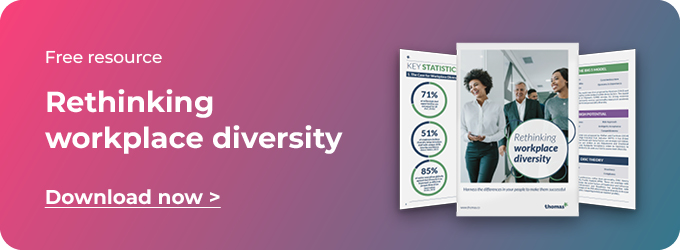Bias in the boardroom is finally being addressed but many businesses are still at a loss at where to begin - or in some cases - identifying where there is a problem. For many individuals that have been affected by unconscious bias, this is a start but, there is more to do.
In our guide today, we are going to look at where you can begin removing unconscious bias from your boardroom.
Board diversity in the UK
The issue of board diversity in the workplace has been a hot topic for many years. A more diverse and representative group of people has been shown to demonstrate greater business success, opening of opportunities and markets, a widening of the general talent pool and greater profitability.
But what does the current UK & global landscape look like when it comes to business inclusivity and diversity on the boards of some of the biggest companies in the world?
A Parker Review report published in February 2020 showed that “37% of FTSE 100 companies surveyed* (31 out of 83 companies) - do not have any ethnic minority representation on their boards.” This has decreased from 50% in 2017 but there is still a long way to go.
In the same report, “69% of the FTSE 250 companies analysed (119 out of 173 companies) have no ethnic diversity on their boards**. Across the FTSE 350, 59% have no ethnic minority representation on their company boards (150 out of 256 companies analysed).”
There is a similar situation in the U.S. where the S&P 500 data from October 2020 indicates that only “13% of board members are black” and that “25% of board members are female.”
Bias in the boardroom
Bias in the boardroom can have some damaging effects on your business today. Unconscious bias can bring irrelevant factors into the decision-making process. Things such as age, ethnicity, gender, weight, and even hair color can play a role in personal assessments of candidates and employees and influence the decision to hire, fire, and promote in the workplace.
Even if these influences may be unintentional, they can impact the whole organisation by isolating individuals who may feel underrepresented or that they don’t belong. Fundamentally, unconscious bias is unfair.
Different businesses have found ways to tackle unconscious bias which has blighted recruitment processes and introducing wider diversity to the board.
Unilever scrapped resumes in favor of predictive hiring games and video interviews. The company understood that most of their customers (70%) were female and that their future success lies in getting a more diverse team. The company undertook a series of online games which uses neuroscientific principles and artificial intelligence and soft skill assessments producing a marked increase in their diverse hiring policies. In 2017, 47% of Unilever’s managers were female (up 20%)whilst only 30% made up the whole workforce.
By changing the recruitment process for senior appointments, using a formal search and nominating committee — as opposed to an informal, director-driven process — leads to more board diversity and efficacy. The best example is from The Bank of New York Mellon who instituted a “specific diversity initiative dedicated to minority inclusion,” that incorporated both experiential and identity-based differences. For the company’s board of 12, this policy led to 10 new directors, of which one was Latino, one was African American, and three were women.

How bias impacts the workplace
Bias impacts the workplace in many ways. A narrowing of the talent pool, missed opportunities in the market, a stagnant creative and executional process and lower return of equity based initiatives within the organisation.
Fundamentally, a diverse board “often comes with more cognitive processing and more exchange of information and more perceptions of conflict,” which can generate new ideas and foster creative solutions as according to Columbia University professor Katherine W. Phillips.
Credit Suisse reports that “companies with more than one woman on their board returned a compound 2% over those with none — and that companies with more women at the board or top management level “exhibit higher returns on equity, higher valuations and also higher payout ratios.”
Areas that can be improved with better boardroom representation include;
- Holding meetings scheduled at hours that suit working mums & dad’s
- Giving time for religious members of the team to practice if it coincides on a workday.
- Create inclusive meeting practices and open debates in these meetings with all parties involved.
- Create supportive dialogue that, Acknowledges, Clarifies, Explores and Solves issues brought about from unconscious biases and in displays of micro-aggression.
There is more that needs to be done when it comes to tackling unconscious bias in the workplace. However, it is also important to understand that it can be done. By performing business audits, understanding how your recruitment process may be limiting your search for diverse talent or hiring at a senior level, you can make strides to addressing the issue. Importantly removing unconscious bias is something that takes time, and must be done continuously and in an open manner from staff so that they can express the change that is needed.
Reduce unconscious bias in the boardroom and the workplace with Thomas
A lack of diversity in your workforce and unconscious bias in your decision making processes is harmful to your business can prevent you from hiring and keeping genuine talent. Our talent assessment platform can help you to increase the diversity of your workforce and reduce unconscious bias in your decision making processes.
If you would like to find out more about how we can help you address unconscious bias and increase the diversity of your workplace, please speak to one of our team.





